Kimchi or Sauerkraut: Fermented Favorites Face Off
Flavor clash between kimchi and sauerkraut creates a fascinating culinary debate for fermentation enthusiasts.
Tangy cabbage creations have captivated taste buds across different continents throughout history.
Korean kimchi packs a spicy punch with its vibrant red pepper flakes and distinctive garlic notes.
Meanwhile, European sauerkraut offers a more subtle sourness that pairs perfectly with hearty dishes from German traditions.
Both fermented favorites deliver not just memorable flavors but also impressive health benefits through beneficial probiotics.
The preservation methods behind these foods tell rich stories about cultural adaptation and necessity before refrigeration existed.
Most people find themselves drawn to one style over the other based on personal spice preferences.
Stick around as we dive deeper into what makes each of these fermented treasures so uniquely delicious.
Kimchi vs Sauerkraut: The Differences
Fermented vegetables deserve a spot on your dinner table, so knowing the difference between types can help with tonight's meal decision.
This table shows you the differences between kim and sauerkraut.
| Feature | Kimchi | Sauerkraut |
| Origin | Korea | China or ancient Rome |
| Key Ingredients | Cabbage, Korean chili pepper, garlic, green onion, ginger | Cabbage |
| Preparation | Cabbage cut in half or kept whole | Cabbage shredded |
| Brining | Brine discarded before fermentation | Brine used during fermentation and in final product |
| Fermentation Time | 1-2 days at room temperature | 5 days to 4 weeks |
| Texture | Crunchy and crispy | Soft with some crunch |
| Taste | Spicy, sour, salty, and umami | Sour and salty |
| Smell | Strong and pungent | Sour and vinegar-like |
| Shelf Life | 3-6 months in the fridge | 4-7 months in the fridge |
Origins
Kimchi is a traditional Korean fermented dish that has been an essential part of Korean cuisine for centuries. It originated as a method to preserve vegetables during harsh winters and has since evolved into a variety of regional styles with complex flavors.
Sauerkraut, on the other hand, has less clear origins but is generally believed to have originated in either ancient China or Rome, eventually spreading to Central and Eastern Europe. It became a staple in German and Eastern European diets as a preserved cabbage product.
Ingredients
Kimchi typically uses Napa cabbage or Korean cabbage as its base but includes a rich blend of seasonings such as Korean chili pepper powder (gochugaru), garlic, ginger, green onions, and sometimes fish sauce or fermented seafood, which contribute to its complex umami, spicy, and pungent flavors. Sauerkraut is much simpler, using primarily white or green cabbage and salt.
Its flavor comes solely from the fermentation of cabbage by lactic acid bacteria, producing a tangy, sour taste without added spices.
Preparation
The preparation methods of kimchi and sauerkraut differ significantly. For kimchi, the cabbage is often left in larger pieces, either halved or whole leaves, allowing the seasoning paste to penetrate thoroughly.
The vegetables are salted and then rinsed to remove excess brine before fermentation. In contrast, sauerkraut preparation involves finely shredding the cabbage and mixing it with salt, which draws out moisture.
The shredded cabbage is then packed tightly, allowing it to ferment submerged in its own brine.
Brining
In kimchi making, the brine that forms from salting the cabbage is typically discarded before adding the seasoning paste and fermenting, as the goal is to reduce excess water and concentrate flavors. Sauerkraut fermentation relies heavily on the brine, which remains with the cabbage throughout the process, creating an anaerobic environment essential for lactic acid bacteria to thrive.
This brine is also often consumed as part of the final product, contributing to its distinctive sourness.
Fermentation Time
Kimchi ferments relatively quickly, often within 1 to 2 days at room temperature, after which it is stored in a cooler environment to slow the process and develop deeper flavors. This short fermentation is enough to develop kimchi’s characteristic tangy, spicy, and complex taste while preserving a crunchy texture.
Sauerkraut requires a much longer fermentation time, ranging from 5 days to several weeks (sometimes up to 4 weeks), depending on the desired flavor intensity and texture. The slower fermentation leads to a softer texture and more pronounced sourness.
Taste and Textures
Kimchi offers a more complex and layered flavor profile, combining spicy heat, sourness, saltiness, and umami richness from the various seasonings and fermented seafood components. This makes it bold and intensely flavored.
Sauerkraut is simpler, with a clean, tangy, and salty flavor derived purely from the lactic acid fermentation of cabbage. Its taste is less complex but refreshingly sour, making it a classic complement to hearty dishes.
One of the most noticeable differences between kimchi and sauerkraut is texture. Kimchi tends to maintain a crisp, crunchy texture because of its shorter fermentation and the use of Napa cabbage with thicker, firmer leaves.
The added spices also help retain the texture by drawing out moisture. Sauerkraut is softer due to its longer fermentation and finely shredded cabbage, but it usually retains a slight crunch, especially if not over-fermented.
Shelf Life
When refrigerated, kimchi can typically last between 3 to 6 months, depending on the recipe and storage conditions. Its active fermentation continues slowly in the fridge, which can further deepen the flavor over time but may also soften the texture.
Sauerkraut has a slightly longer shelf life of 4 to 7 months in the refrigerator, due to its higher salt content and fully submerged fermentation brine, which helps preserve it while maintaining safety and flavor.
What Kimchi and Sauerkraut Share in Common?
How Kimchi and Sauerkraut Are Used in Recipes
Kimchi is commonly used as a side dish in Korean meals but also features in recipes like kimchi fried rice, kimchi stew (jjigae), and kimchi pancakes. It adds a spicy, tangy kick that enhances soups, noodles, and even tacos or burgers for a fusion twist.
Sauerkraut is often served alongside sausages, pork, or in Reuben sandwiches. It’s also used in soups, salads, and casseroles, lending a tangy, slightly sour flavor that complements rich or fatty dishes.
How to Make Kimchi at Home
Making kimchi is not as hard as you think. Here are what you should prepare.
Ingredients:Step-by-Step Guide
Making Homemade Sauerkraut
The ingredients to make sauerkraut is very simple. Keep reading to find out.
Ingredients:Optional: caraway seeds or juniper berries for flavor
Buying Tips: Choosing Quality Kimchi and Sauerkraut
In case you can't make it at home, you should know these buying tips before getting ones from the stores.
Avoid products with artificial preservatives, colors, or excessive additives.
Got Questions? We’ve Got Solutions
1. Can I use kimchi or sauerkraut in cooking?
Yes! Both are versatile in cooking. Kimchi adds spicy depth to fried rice, stews, and pancakes, while sauerkraut works wonderfully in Reuben sandwiches, alongside sausages, or mixed into potato dishes.
2. How long do kimchi and sauerkraut last?
When properly stored in the refrigerator, kimchi typically lasts 3-6 months, while sauerkraut can last 6-12 months. The flavor will continue to develop and become more sour over time.
3. Are kimchi and sauerkraut healthy?
Both are packed with probiotics that support gut health. Kimchi contains additional nutrients from its spices and vegetables, while sauerkraut is lower in calories and offers vitamin C and fiber.
4. Can I make kimchi or sauerkraut at home?
Yes, both are made through fermentation and can be prepared at home. Sauerkraut is simpler, requiring just cabbage and salt, while kimchi needs more ingredients including Korean chili flakes, garlic, and fish sauce.

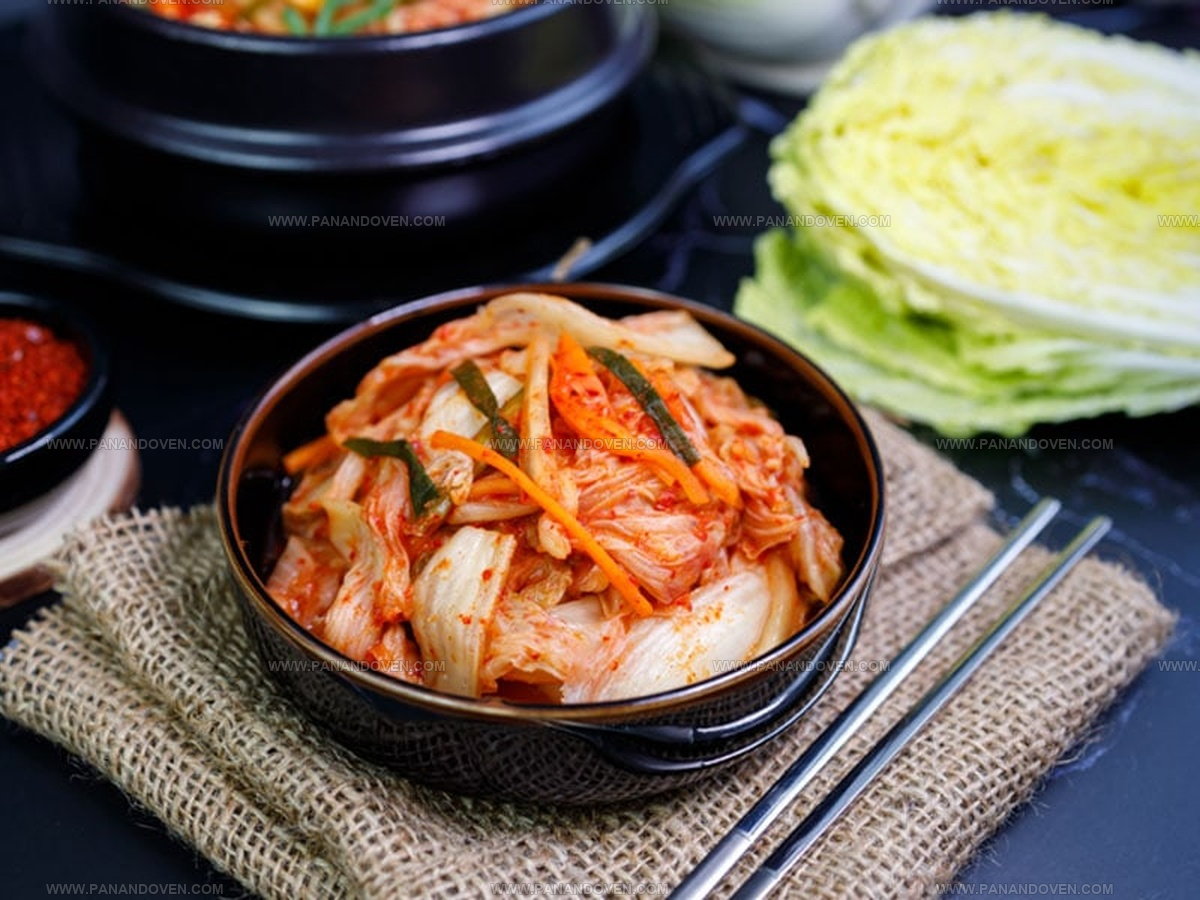
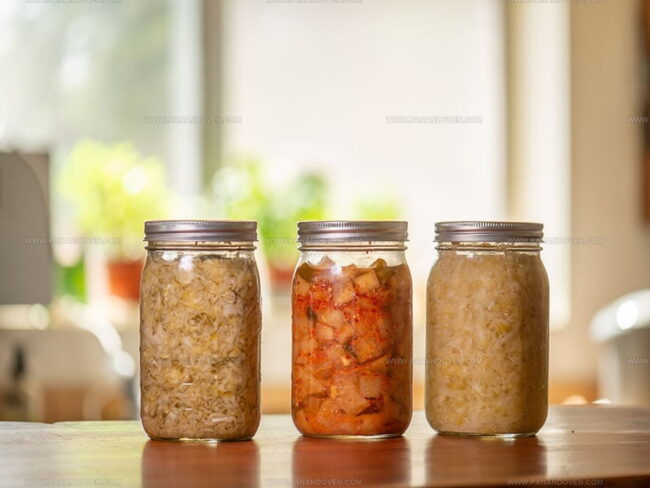
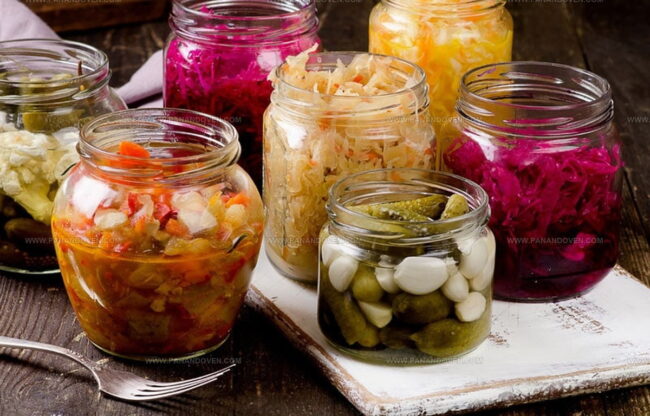
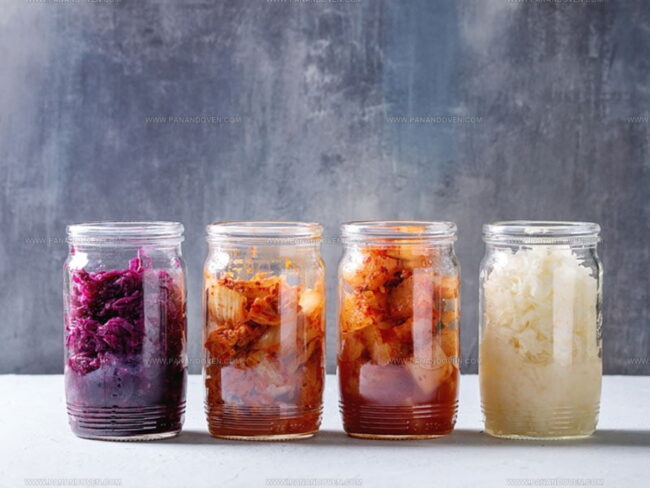
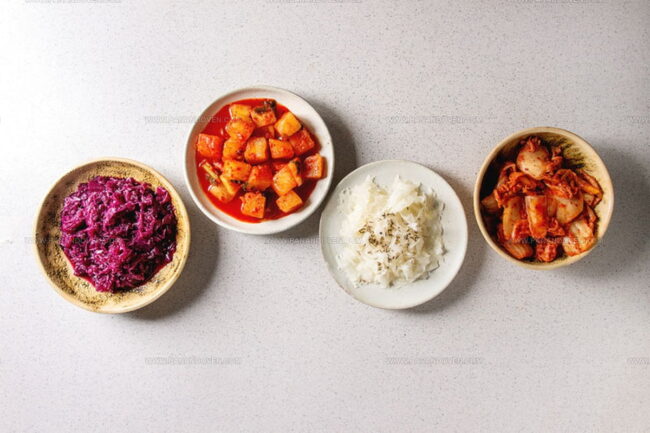
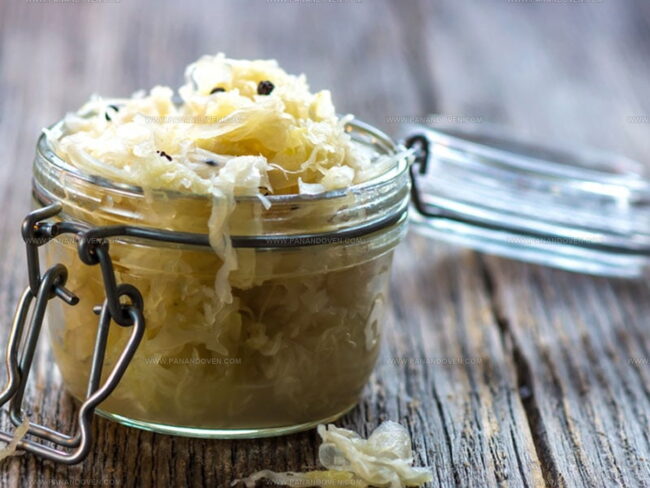
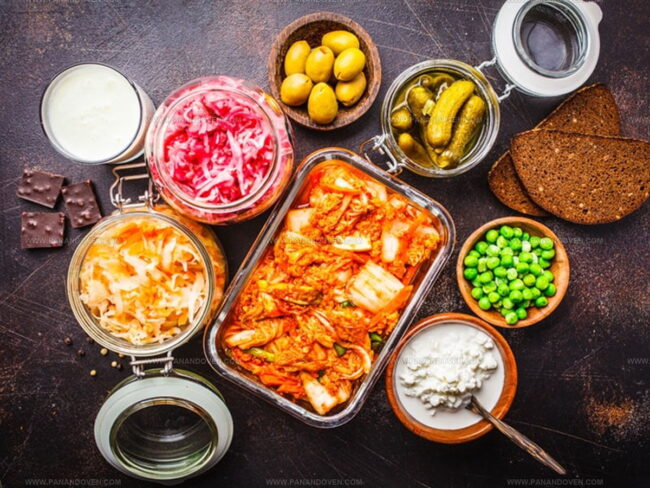
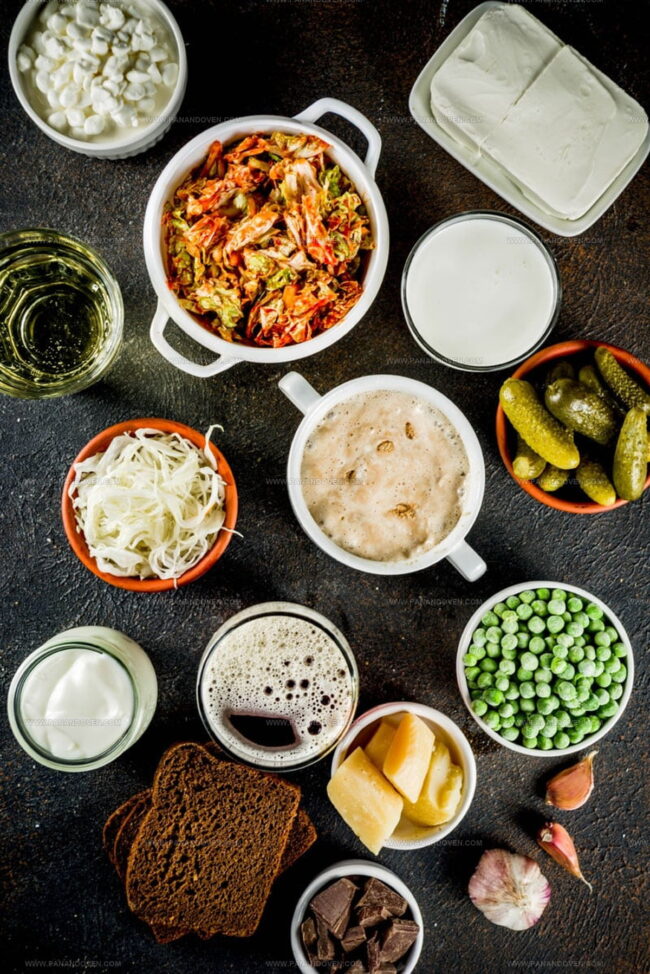
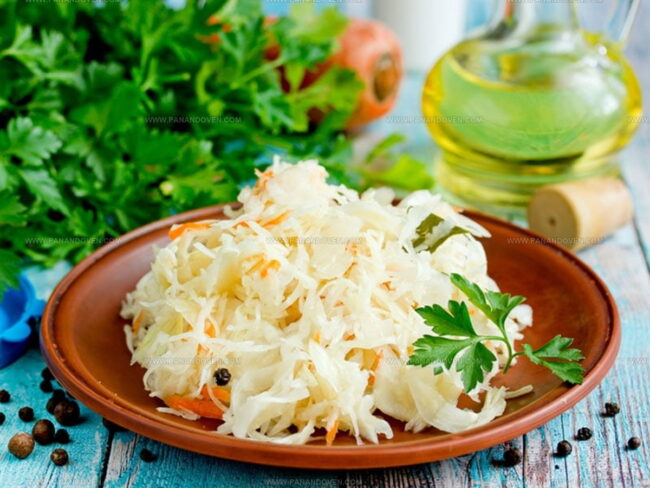
Marcus Reed
Founder & Food Content Creator
Expertise
Single-recipe development, Seasonal and local ingredient utilization, Food photography and styling, Culinary writing and content creation
Education
Culinary Arts Certificate, Blue Ridge Community and Technical College, WV
Focus: Fundamentals of culinary techniques, emphasizing hands-on experience in small-scale kitchen settings.
Marcus’s story begins in Asheville, where good food and family kitchens shaped his earliest memories. After hands-on culinary training and a lot of trial (and a little error), he realized that real cooking isn’t about perfection, it’s about connection.
At Pan and Oven, Marcus crafts recipes that are easy to follow, packed with flavor, and built for real kitchens.